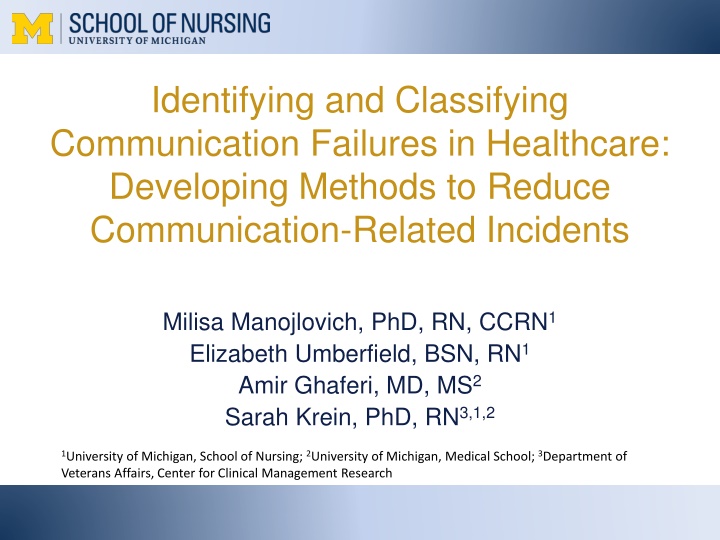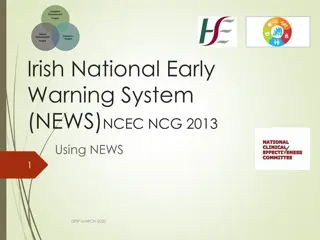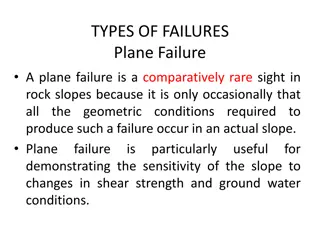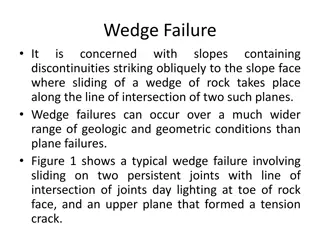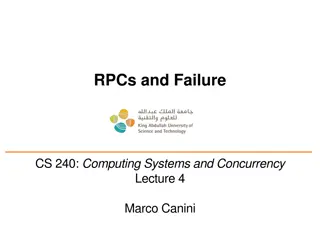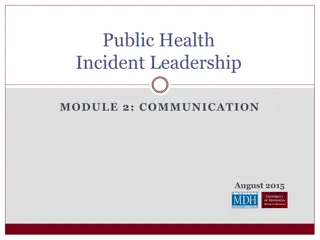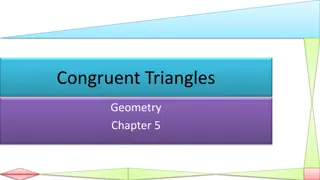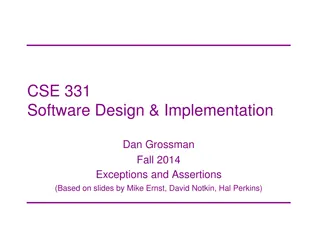Identifying and Classifying Communication Failures in Healthcare: Methods to Reduce Incidents
This research paper explores strategies to reduce communication-related incidents in healthcare settings, focusing on identifying and classifying failures. Authors from the University of Michigan School of Nursing and Medical School present methods to enhance communication in healthcare to improve patient outcomes and safety.
Uploaded on Feb 21, 2025 | 1 Views
Download Presentation

Please find below an Image/Link to download the presentation.
The content on the website is provided AS IS for your information and personal use only. It may not be sold, licensed, or shared on other websites without obtaining consent from the author.If you encounter any issues during the download, it is possible that the publisher has removed the file from their server.
You are allowed to download the files provided on this website for personal or commercial use, subject to the condition that they are used lawfully. All files are the property of their respective owners.
The content on the website is provided AS IS for your information and personal use only. It may not be sold, licensed, or shared on other websites without obtaining consent from the author.
E N D
Presentation Transcript
Identifying and Classifying Communication Failures in Healthcare: Developing Methods to Reduce Communication-Related Incidents Milisa Manojlovich, PhD, RN, CCRN1 Elizabeth Umberfield, BSN, RN1 Amir Ghaferi, MD, MS2 Sarah Krein, PhD, RN3,1,2 1University of Michigan, School of Nursing; 2University of Michigan, Medical School; 3Department of Veterans Affairs, Center for Clinical Management Research
Acknowledgement Risk Management Department
Background Communication failures and patient safety In the moment vs. retrospective methods Characterizing and learning from failures Hospital incident reports Can they be used to identify failures?
Study Purpose To identify and characterize communication failures between nurses and physicians by applying a classification method to incident reports.
Study Design Qualitative descriptive design Large Midwest tertiary care health system Electronically captured incident reporting system (RL6: Risk)
Population Studied 28,893 reports submitted 16,165 reports to consider for analysis 698 reports after filters applied (communication failure, RN/MD, adult) 161 hand-selected RN-MD communication failures
Conceptual Framework: Rhetoric What is Rhetoric? Rhetorical Approach Why Rhetoric? The study of the relationship between communi- cation and its effects. All communication has intended/actual effects. Places the message in relation to the setting and circumstances surrounding the message. A rhetorical approach shifts emphasis away from the message to action arising from it.
Halverson et al. (2011) Classification Failure Type Definition Error of Content Information in the message was inaccurate, missing, or unclear Error of Occasion Something in the physical or temporal situation/context of the message was wrong Error of Purpose Unresolved goals (implicit or explicit) of the communication event Error of Audience Appropriate individuals were not participating Error of Omission Communication was absent Error of Inappropriate Communication Communication consisted of offensive remarks or unreasonable requests
Error of Content Definition Information in the message was inaccurate, missing, or unclear. Brief Example from Text Nurse on unit was given report from OR on a patient arriving to the unit and was told that they were only on propofol and insulin. Pt arrived with vasopressin, norepinephrine, and milrinone in addition to the propofol, and insulin.
Error of Occasion: Physical Definition Something in the physical or temporal situation/context of the message was wrong. Brief Example from Text Per night RN: the following morning orders were never entered. However, they were written at 2159 but were signed and held (the night nurse didn't see them).
Error of Occasion: Temporal Definition Something in the physical or temporal situation/context of the message was wrong. Brief Example from Text An insulin infusion initiated from instruction from endocrinology to nursing staff and patient without an actual order being placed in chart. Advanced practice provider attempted to get information from endocrinologist, but due to delay in hearing back no order was placed until the following morning from recommendations were documented the evening before.
Error of Purpose Definition There were unresolved goals (implicit or explicit) of the communication event. Brief Example from Text On multidisciplinary rounds I (RN) brought up to attending and CCMU fellow that PICC could be a source of infection and that we should consider removing it. MDs felt that it wasn't necessary given that pt. has VAE and blood cultures have been negative. I explained my rationale for concern given vital signs and +SIRS criteria. At this time the line remains in place.
Error of Audience Definition Appropriate individuals were not participating. Brief Example from Text Mr.*** was put on call for the OR and brought to preop. Pt was in preop for 2 hrs with family. I called the OR charge nurse to see what the delay was with pt's case. She stated she was just told that the pt was cancelled. Apparently the service had decided earlier that am that they were not going to do the procedure. No communication with OR, preop or the pt that he was cancelled. Pt and family were not happy with the situation.
Error of Omission Definition Communication was absent. Brief Example from Text Physician NOT notified of patient's T38 at 7pm. [MD] Tried to tell charge nurse, no answer. Paged nurse to notify physicians of abnormal vital signs, no response.
Error of Inappropriate Communication Definition Communication consisted of offensive remarks or unreasonable requests. Brief Example from Text I inadvertently contaminated the corner of a sterile table. I immediately notified the scrub and told him that the towels were contaminated and his gloves and pen were too. He shouted, "No they're not!" and threw the pen on the table and threw the towels on the floor. He changed his gloves but continued to use the pen. I asked him to stop, but he shouted that he was done talking to me and said he was going to write this up as anesthesia is always contaminating tables and he has to "watch us like a hawk.
Results The 161 reports involved at least one communication failure. 40 reports (~25%) contained more than 1 failure. In the 161 reports, there were 211 failures. Errors of omission were the most common (27%). Of the 161 reports,120 named adverse outcomes: Delays in care (57%) Actual or potential for physical harm (30%) Dissatisfaction (13%)
Takeaways Nonspecific communication interventions are unlikely to improve patient safety. We extend our knowledge of communication failures using retrospective data found in incident reports. While not generalizable, our method may represent a way to understand and act upon communication failure types within a specific healthcare setting.
Conclusions/Implications Our adapted failure classification system represents an advance in identifying types of failures and contributing factors. Incident report data could be used to make recommendations to reduce future failures. Using these methods, we can design and test interventions to improve communication.
Thank you!! Questions? Comments? mmanojlo@umich.edu @mmanojlo
